How to Properly Debadge a Vehicle
by Ivan RajicThis article has been on my “to do” list for a while now and I finally got a car to go through the process and take some photos. I also got a bit lucky because this badge removal showed both the good and the bad you can end up with when going through the process. It’s basically a lot of step by step photos with brief descriptions and any advice I have for that step.
To begin, I used the following tools and products:
- Optimum No-Rinse (ONR)
- Microfiber towels
- Heat gun
- Plastic razor blades
- Goof Off Degreaser
- Clay Magic Clay Bar
- Flex polisher
- Lake Country Pads
- Meguiar’s Polishes
Badge to be removed on my daily driver/winter beater 95 BMW 525i…
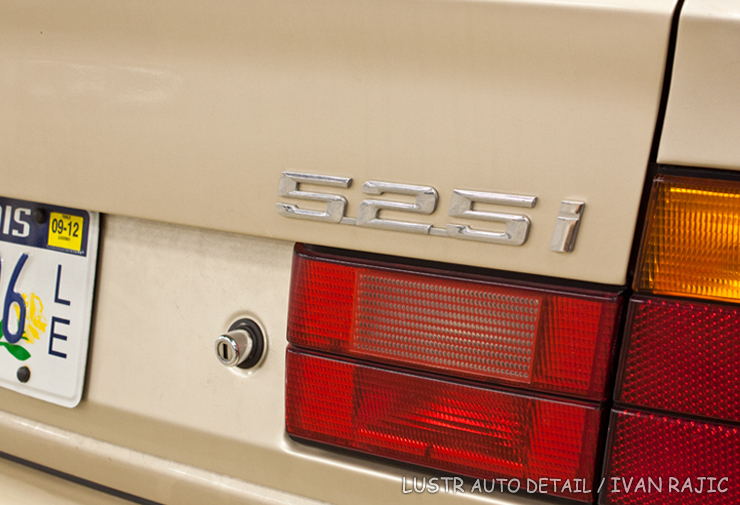
I started the process by thoroughly cleaning the area around the badge, first with a rinseless wash process, then a simple wipe down using ONR and a microfiber towel…

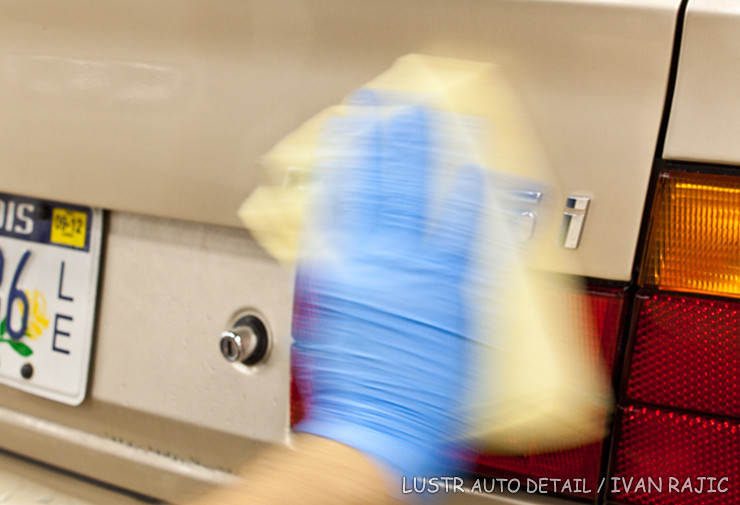
After the area is thoroughly cleaned, you want to heat up the badge enough for it to start moving a bit when you push on it. This means the adhesive in the back is starting to give and you can start the debadging process. Just a heads up, a regular hair dryer will work wonders here, especially for those who never used a heat gun because not only will the hair dryer do the job just fine, but you won’t risk badly burning the paint, the badge, or your hands with improper use of a heat gun. With a good heat gun, it usually takes only 10 seconds or less to warm up the adhesive enough and start removing.
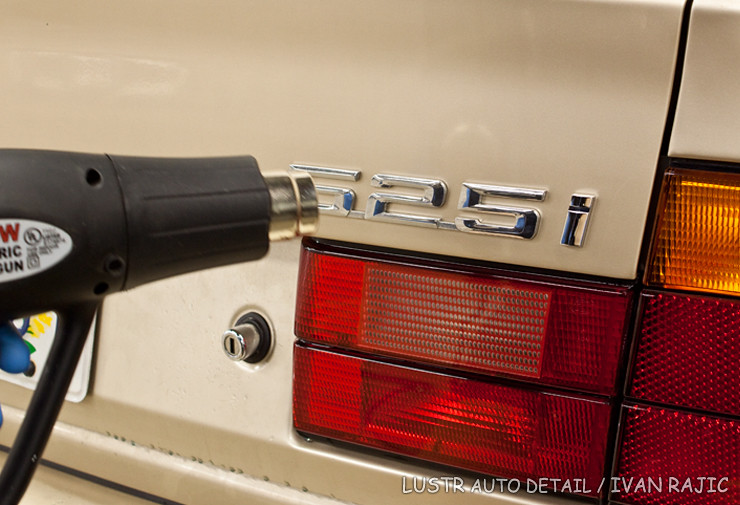
Once warmed up, I like to start pulling off the badge using a plastic razor blade by inserting it level with the paint and starting to cut through the adhesive in the back…
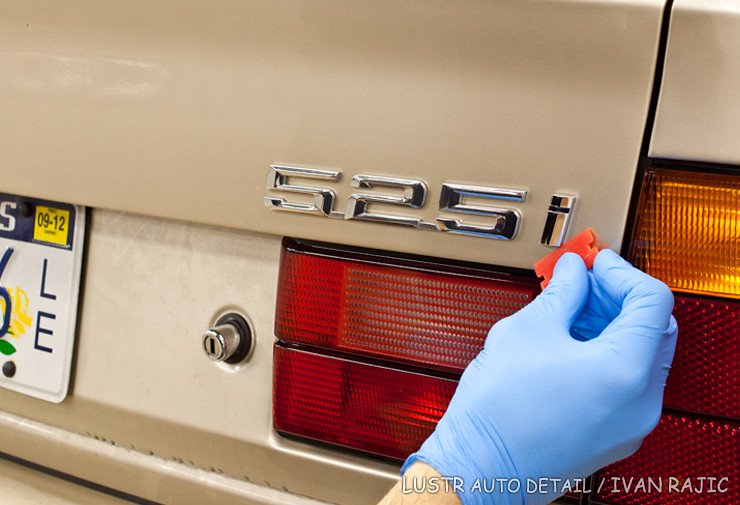
If necessary, you can reheat the badge a bit to make the adhesive easier to cut, but for the “i” it was pretty simple and it only needed a quick swipe of the plastic blade to remove. A word of caution, you want to be extremely careful when using the plastic blade as you can easily scratch up the paint below and have a lot of unnecessary polishing to do later. Many people also utilize fishing line or even some strong sewing thread, so that’s definitely a great alternative to the blade. I like to use the blade mainly because it helps me start removing the badge in certain areas where a thread will be worthless, as we’ll see a few photos below.
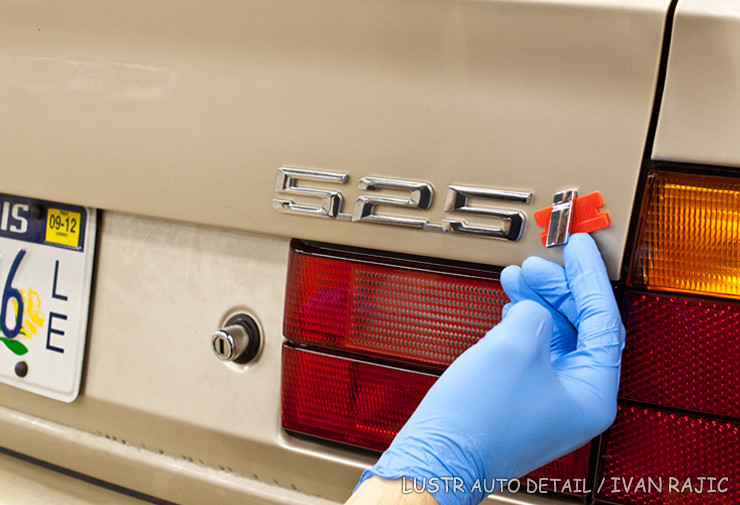
Once enough of the adhesive is separated from the back, you can simply pull off the badge piece away from the paint.

This particular badge obviously has two parts, so once I was done with the “i”, I just kept going onto the “525”…

Here you can see me reheating the badge a bit more to loosen up the adhesive and keep pushing the blade through. I believe this was only the 2nd time I reheated the badge.
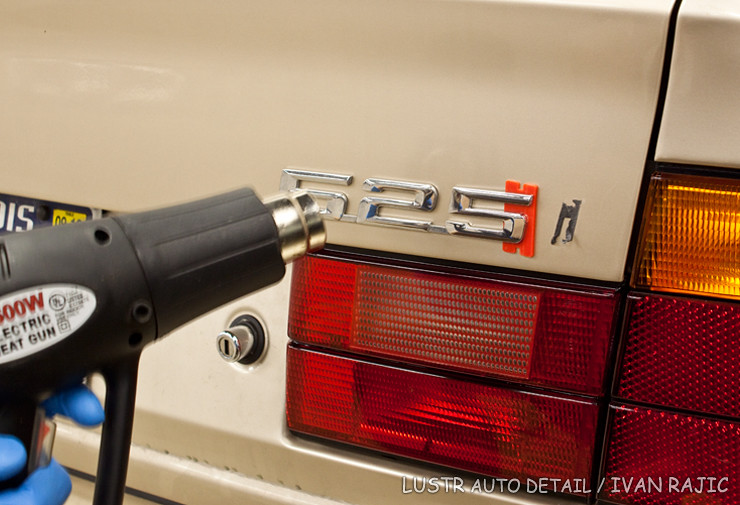
A very important thing to remember if you want to keep the badge intact… be mindful of the small connecting pieces, such as the little tabs between the numbers in this “525”. If you don’t use some common sense and patience as shown in this photo…
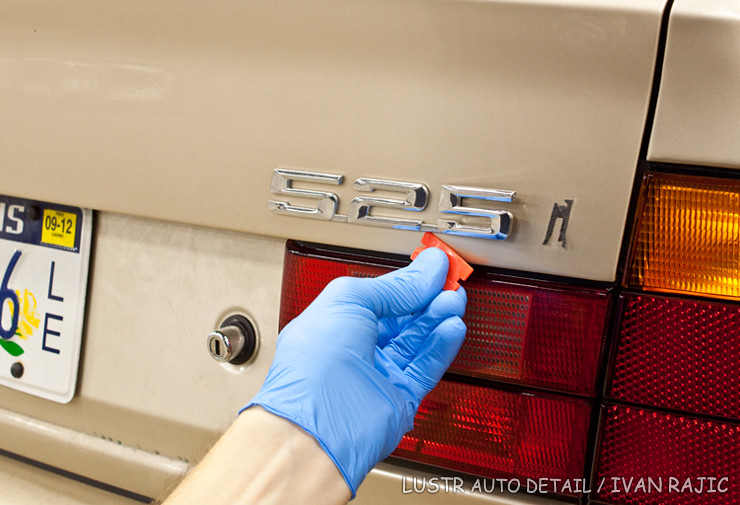
you’ll end up with a broken badge piece such as this…
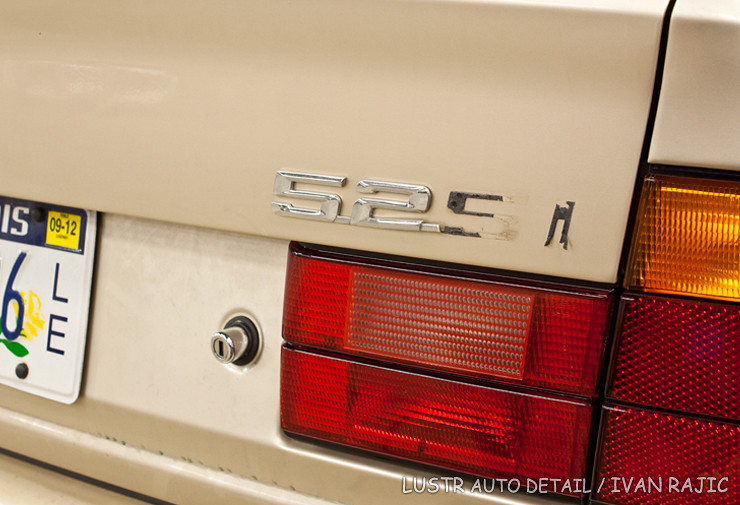
As I said above, you simply want to work your way from the outside in and carefully peel back the badge slightly until it comes off evenly and in one piece. Here’s the badge fully removed…
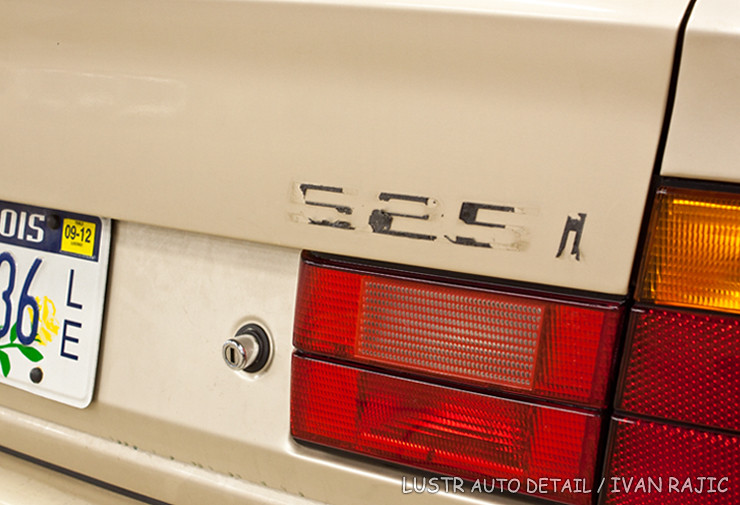
To get the remaining adhesive off, I once again used the heat gun to warm it up…
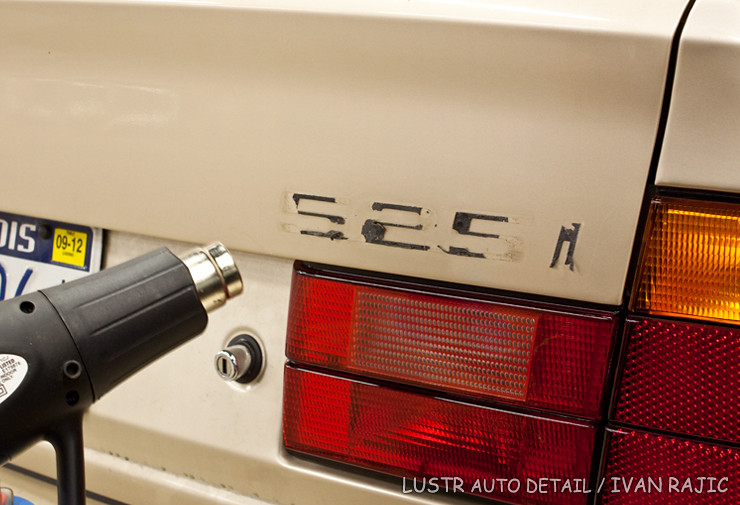
Then a microfiber towel to wipe it off…
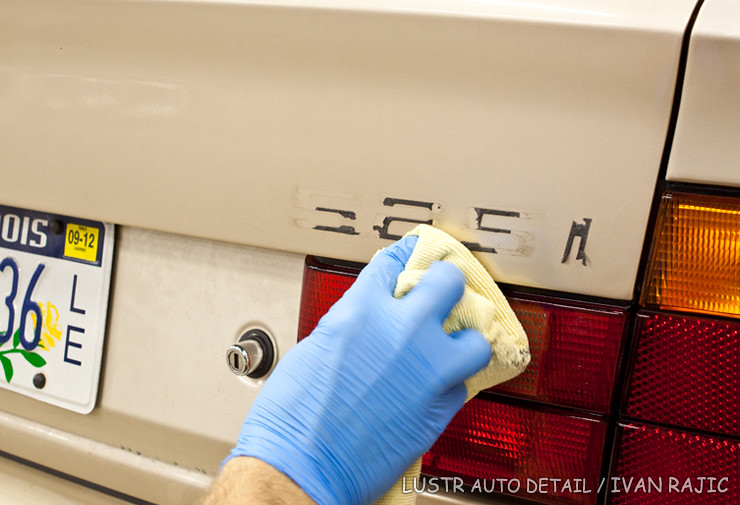
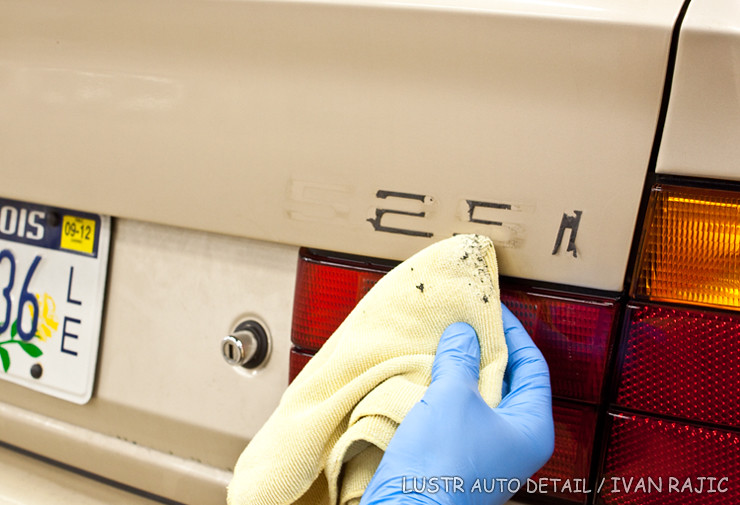
At this point, almost all the adhesive came off fairly easily with some heat and light wiping, but there’s almost always some remaining adhesive that will require some sort of grease remover and elbow grease. I always keep some Goof Off handy, so that’s what I chose to utilize here. After a few sprays over the entire area covered by the badge…
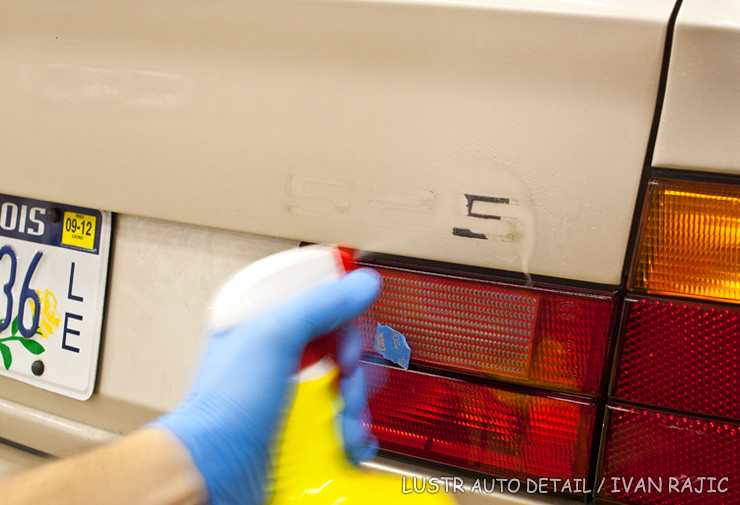
I simply used a microfiber towel to pull off the loosened adhesive…
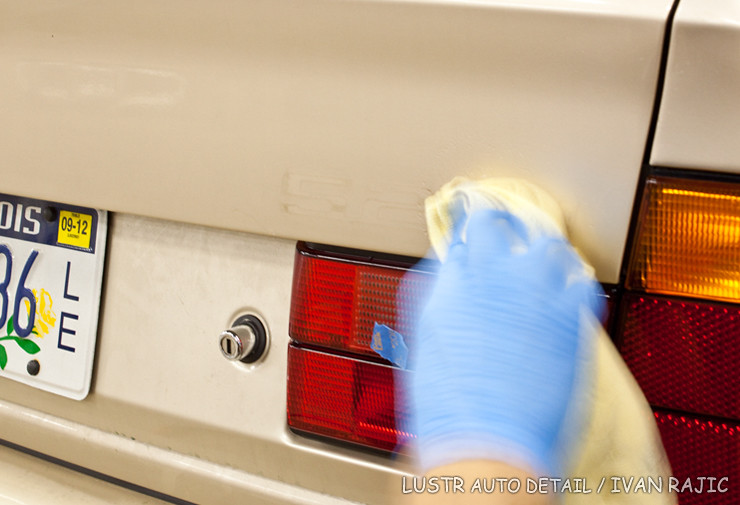
Badge and adhesive all gone!
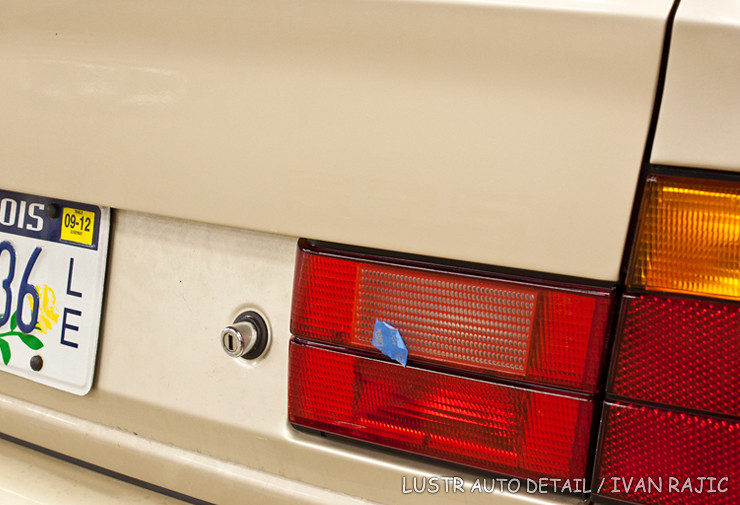
After removing all the adhesive, I like to use the the Blue Clay Magic clay bar to ensure a smooth surface…
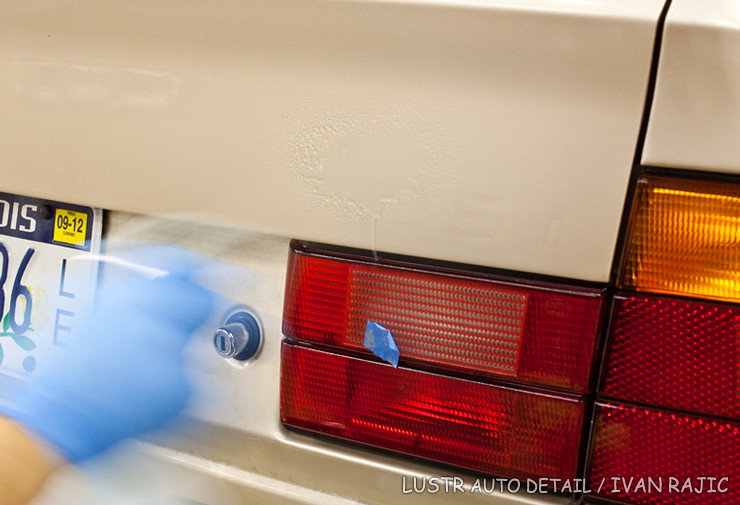
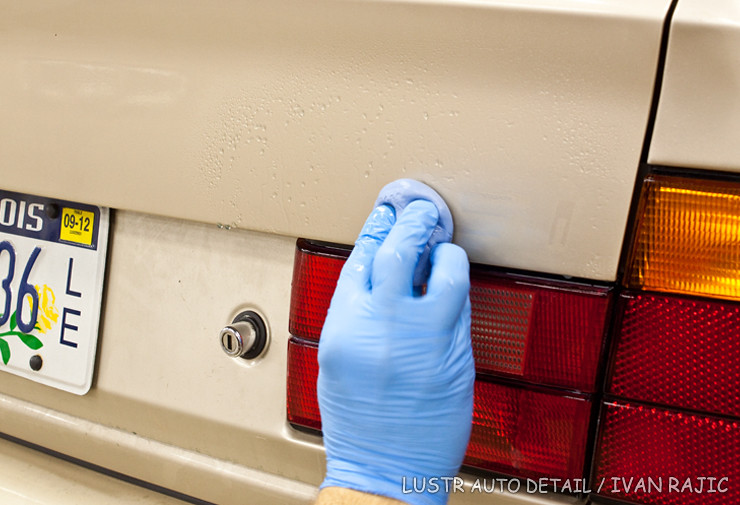
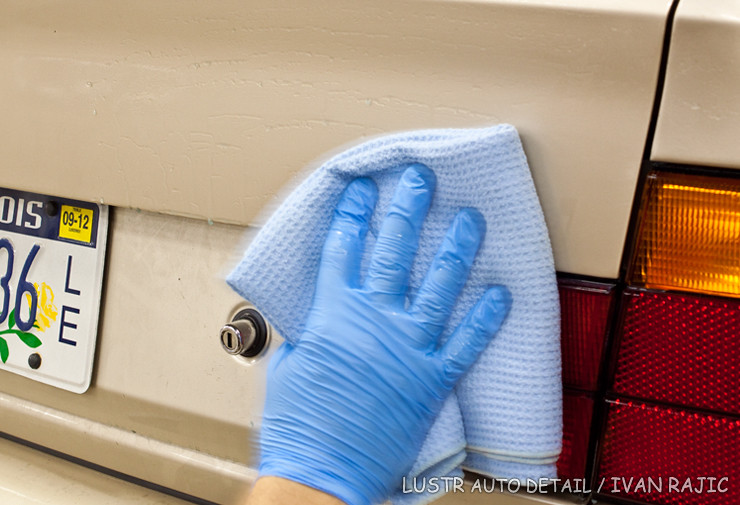
Once that’s done, we have to do some polishing to try and remove some of the “ghosting” left over by the badge. Measuring the paint…
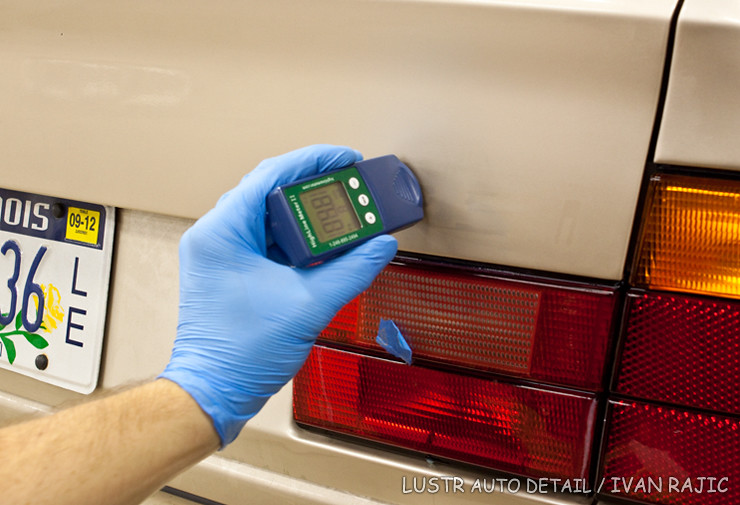
I first did 3 steps of polishing using Meguiar’s 105 and Lake Country Orange Pad. After, I used Meguiar’s 205 and a Lake Country White Pad to refine the paint a bit.
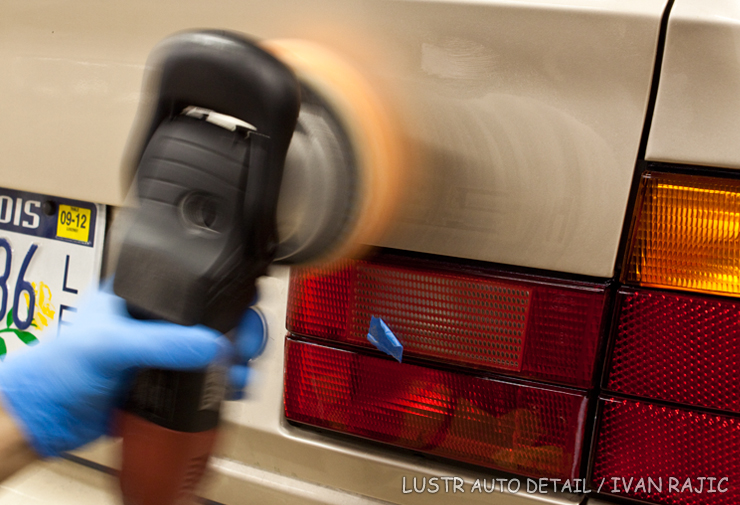
The polishing definitely leveled the paint and removed a lot of the “ghosting”, but due to the age of the paint there was still a difference between the area previously covered by the badge and the rest of the paint. This photo only barely shows the difference…
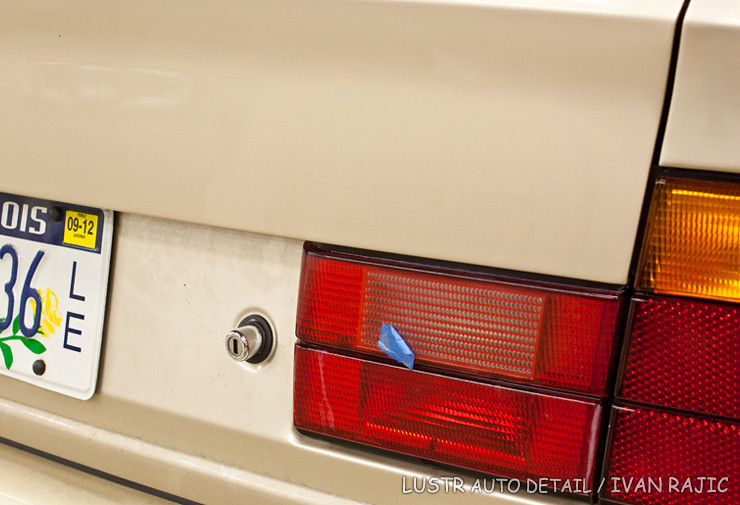
but from certain angles and under certain light, you can easily notice how the paint looks different…
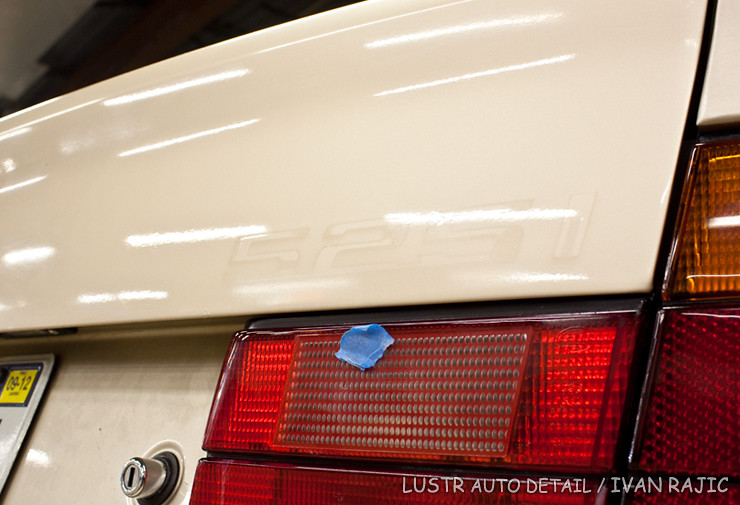
I decided not to polish any more because it wasn’t making a difference and I didn’t want to go through too much of the clearcoat, so I called it quits at this point.
That brings me to the good and the bad mentioned above. As you can tell, the badge removal went well in that the paint wasn’t scratched at all and the rear end looks much cleaner overall (in my opinion at least). On the other hand, once you get up close to the car and look at it under some light, the ghosting will be apparent so it’s one of the bad consequences on removing the badge from an old car. On newer cars, this is almost never an issue BUT it can happen, so always keep that in mind.
Well that’s about it. Hopefully it has answered some of the questions that readers asked about badge removal and as always, please feel free to leave any comments or questions below.
Buy Products From This Article
Purchase the products used in this article individually or in one convenient package here!










Nice article! That last shot is actually pretty neat…one issue I think should be addressed though is usually the larger badges (like the manufacturers logo) are set in with pegs and there are holes so people should be careful so as not to have exposed holes on various areas of the car.
nice…or just pour hot water over the numbers, then take floss to run it through…if there is glue left just use some glue-gone and you’re done. doesn’t damage paint
As I work for a luxury dealership, we seldom receive requests to remove the badges. However, at least on new vehicles, we’ve had great luck with a heat-gun and some dental floss. No “ghosting” whatsoever, but these are new MY vehicles. Love the DI info posts…keep em coming! J.
Thanks for the comments guys!
Eric: This article is focused on the badges usually found on the trunk, which are adhered on using typical adhesive as shown above. Those “main” badges with the little pegs and/or screws are completely different and those looking to get rid of these badges should definitely expect some body work to fill in the holes and repaint the area.
A: I never tried the hot water method, but I guess it should work. Thanks for the info.
Jeff: As you said, on new vehicles it will be a much better result without any ghosting, but my car is simply too old and the paint was never cared for properly, so it resulted in the ghosting.
Hi Ivan, following your post I went ahead and removed all badges on the rear trunk of a 2012 sentra but like mentioned above the nissan badge had two pegs in it. a bodyshop said the cost would be $350 to weld holes and respray the paint lid, of course this will never match the rest of the paint.
would you recommend these holes just be bondoed and airbrushed ? what should i expect the cost of the hole fill be then.
Hi Aurelius,
I wouldn’t be so quick to dismiss the paint matching if the shop resprays the entire trunk, especially since the car is brand new. I would actually be more reluctant to do the bondo and airbrushing as that will not only potentially fail but also might not match well with the rest of the trunk.
I’m really not sure about the costs of filling the holes either way, but to answer your question, I would much rather go with the weld/repaint option vs the bondo and blend paint just a small section of the trunk.
Hope that helps.
As for the trunk I would go with the welding, however being a 2012 vehicle I see this as potentially voiding warranty or any further repairs that may occur with the trunk or surroundings. If painted I would look for a good shop, even though it is a new car pending on the paint and experience the colors could still be off and blending could be visible if not tape lines. With the use of bondo you will normally see a wave or texture difference and longevity is usually limited.
could always just reapply the badges and save money–
Great write up and pictures! That ghosting you see can be sanded with 3000 grit wet/dry paper and compounded / polished even on vehicles of that age. Even though the clear coat may not have been as thick as you may have been comfortable with, it is on a vertical trunk surface on an older vehicle. If care and time is taken that ghosting could be removed.
My experience has been that repainting never matches factory output. The batches are different, the manufacturer of the paint could be different, and the method of application is certainly different from the factory application. With all the different types of lighting, angles, and weathering, it will never be the same as the original and will be detectable; if not today, sometime in the future.
Personally, I’d go to the dealer and purchase a new badge, install it, and call it a day.
I don’t like the current design of badges on cars I feel they’re 1980 and should have there appearance updated. Maybe a inset of sorts and lose the chrome.
A good product for removing little stick-on mirrors, stickers, and badges: WD-40. Spray on, let sit, it will soften the glue so you can remove the badge or sticker. It may take a few applications.WD=40 will not hurt the paint.
I’ve also used this to remove the new cement used for gluing new weather stripping to a car’s openings!
It removes the overflow for a nice clean professional look and does not hurt the paint too.
This was a 20 year old car, what about a 10 year old car? Do you think there’s less chance of “ghosting” ?
The newer the car, the less chance for ghosting. However you never really know as there are other variables that come into play (how much it sits outside, how well it’s maintained/washed, etc.
People have no clue that shampoos that grow your hair faster and longer (obviously with no sulfates, no parabens and no DEA) are even a thing. We all can now attain longer hair and achieve more options. For sure worth looking into it.
Whether you’re dealing with hair loss, damaged hair, preventing hair disorders, hair growth, hair and scalp health generally, almost the same thoughts actualize.
In most cases, you want to avoid hair treatments and products that use chemicals such as parabens, DEA or sulfates.
What is good for your hair is good for your skin all the same.
For obvious reasons your content above is so useful for various reasons. It stays away from the common mistakes and errors too many fall into- utilizing horrible alternatives. Greatly appreciated!